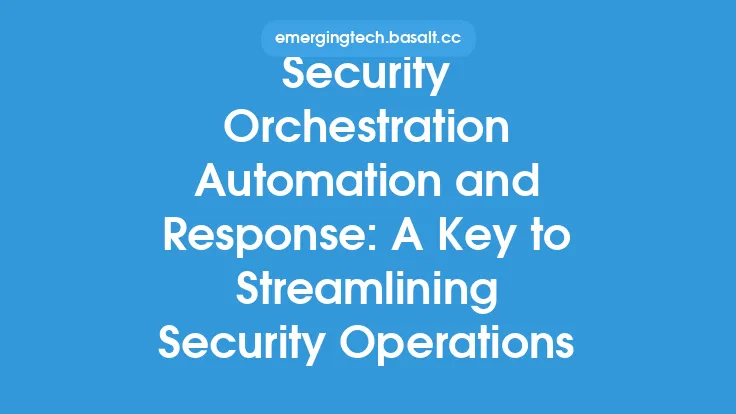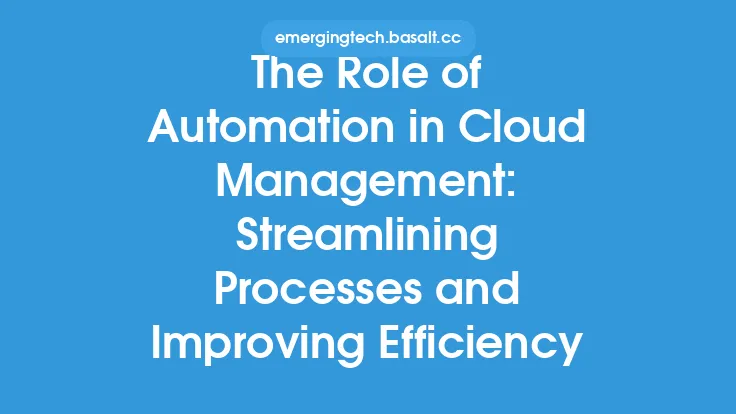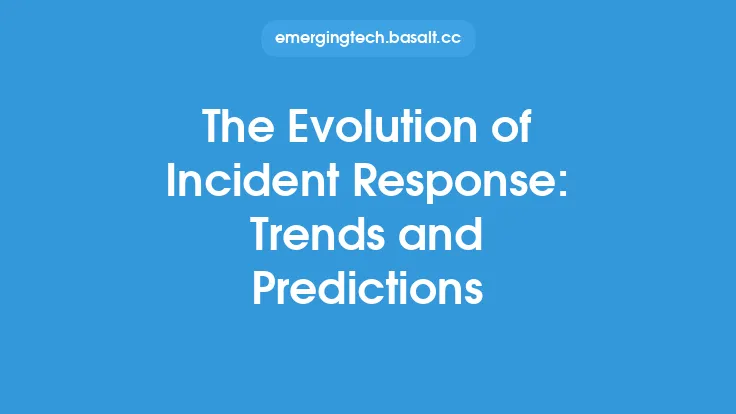The increasing complexity of cybersecurity threats has led to a growing need for efficient and effective security operations. Security orchestration, automation, and response (SOAR) has emerged as a crucial solution to address this challenge. At the heart of SOAR is automation, which plays a vital role in enhancing security operations. In this article, we will delve into the role of automation in security orchestration and response, exploring its benefits, applications, and technical aspects.
Introduction to Automation in SOAR
Automation is the process of using technology to perform tasks with minimal human intervention. In the context of SOAR, automation refers to the use of software tools to automate repetitive, mundane, and time-consuming security tasks. This enables security teams to focus on more complex and high-priority tasks, such as threat hunting and incident response. Automation in SOAR involves the integration of various security tools and systems, including security information and event management (SIEM) systems, threat intelligence platforms, and incident response tools.
Benefits of Automation in SOAR
The benefits of automation in SOAR are numerous. Firstly, automation helps to reduce the workload of security teams, allowing them to focus on more strategic tasks. Secondly, automation enables faster response times, as automated workflows can be triggered in real-time to respond to security incidents. Thirdly, automation helps to reduce errors, as automated workflows are less prone to human error. Finally, automation provides scalability, as automated workflows can handle large volumes of security data and incidents.
Applications of Automation in SOAR
Automation has various applications in SOAR, including incident response, threat hunting, and security analytics. In incident response, automation can be used to trigger workflows that isolate affected systems, contain threats, and eradicate malware. In threat hunting, automation can be used to analyze large datasets to identify potential threats and anomalies. In security analytics, automation can be used to analyze security data to identify trends and patterns, and provide insights into security threats.
Technical Aspects of Automation in SOAR
From a technical perspective, automation in SOAR involves the use of various technologies, including APIs, scripting languages, and workflow automation tools. APIs are used to integrate various security tools and systems, enabling the exchange of data and the triggering of automated workflows. Scripting languages, such as Python and PowerShell, are used to automate tasks and workflows. Workflow automation tools, such as automation frameworks and orchestration platforms, are used to design, implement, and manage automated workflows.
Automation Frameworks and Orchestration Platforms
Automation frameworks and orchestration platforms are critical components of automation in SOAR. These platforms provide a centralized interface for designing, implementing, and managing automated workflows. They also provide a range of features, including workflow automation, incident response, and security analytics. Popular automation frameworks and orchestration platforms include Splunk, Phantom, and Demisto. These platforms support a range of automation protocols, including REST APIs, SOAP APIs, and message queues.
Integration with Security Tools and Systems
Integration with security tools and systems is a critical aspect of automation in SOAR. This involves integrating automation frameworks and orchestration platforms with various security tools and systems, including SIEM systems, threat intelligence platforms, and incident response tools. Integration enables the exchange of data and the triggering of automated workflows, enabling security teams to respond quickly and effectively to security incidents. Popular integration protocols include APIs, Syslog, and SNMP.
Best Practices for Implementing Automation in SOAR
Implementing automation in SOAR requires careful planning and execution. Best practices include defining clear automation goals and objectives, identifying automation opportunities, and designing automated workflows. It is also important to test and validate automated workflows, and to provide training and support to security teams. Additionally, it is essential to continuously monitor and evaluate automated workflows, and to make adjustments as needed.
Challenges and Limitations of Automation in SOAR
While automation in SOAR offers numerous benefits, there are also challenges and limitations to consider. One of the main challenges is the complexity of automation, which can require significant technical expertise and resources. Another challenge is the potential for automation to introduce new security risks, such as the potential for automated workflows to trigger false positives or false negatives. Additionally, automation can be limited by the quality and accuracy of security data, which can impact the effectiveness of automated workflows.
Conclusion
In conclusion, automation plays a vital role in security orchestration and response, enabling security teams to respond quickly and effectively to security incidents. The benefits of automation in SOAR include reduced workload, faster response times, reduced errors, and scalability. Automation has various applications in SOAR, including incident response, threat hunting, and security analytics. From a technical perspective, automation in SOAR involves the use of various technologies, including APIs, scripting languages, and workflow automation tools. By understanding the role of automation in SOAR, security teams can design and implement effective automated workflows, and enhance their overall security operations.





